Root Mean Square
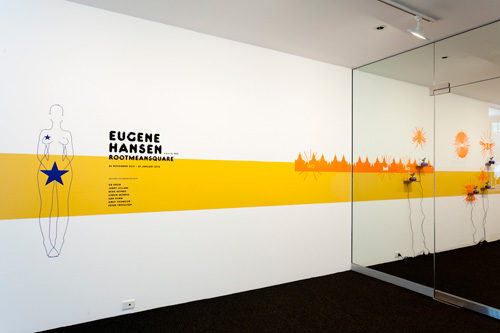
Artworks throughout all galleries:
Simon Morris, Sound line, 2011 , acrylic paint
Dr Kron, Image credit, 2011, adhesive vinyl
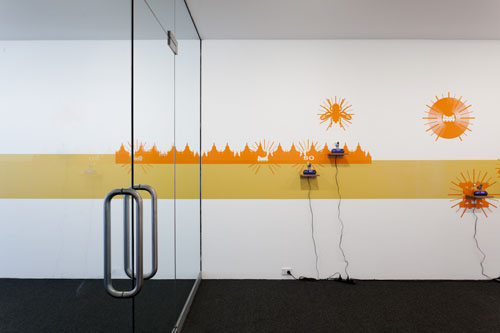
Future Calls The Dawn with Jenny Gillam
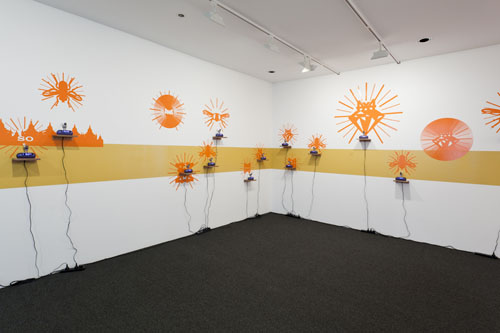
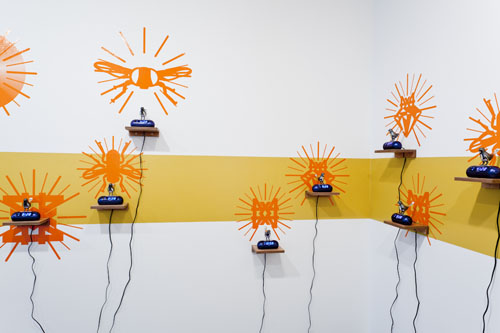
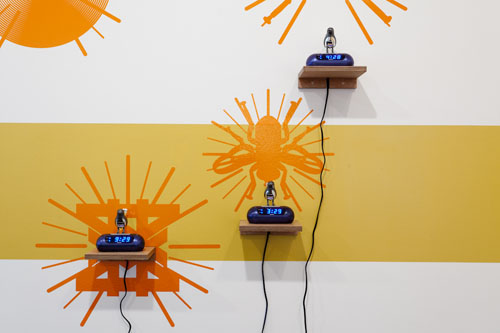
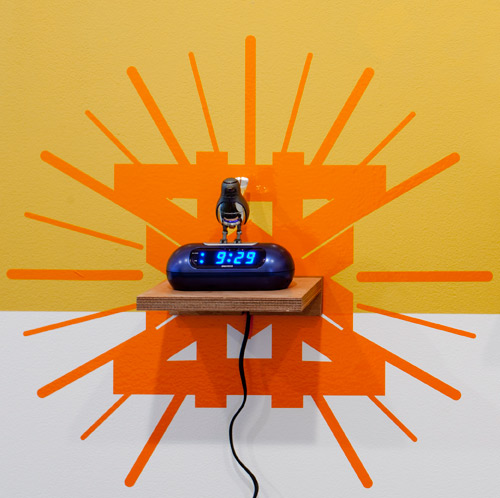
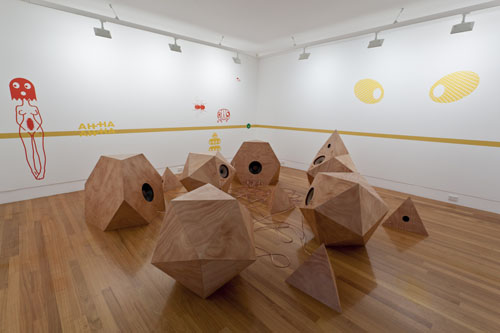
Monophone with Peter Trevelyan
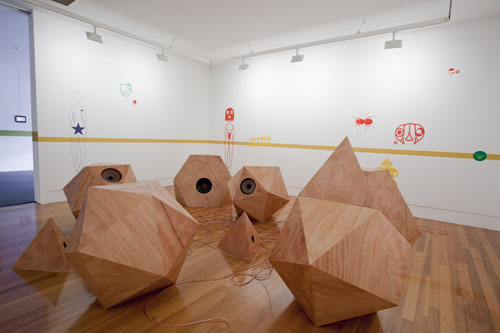
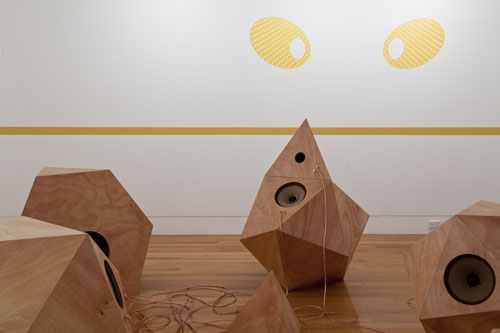
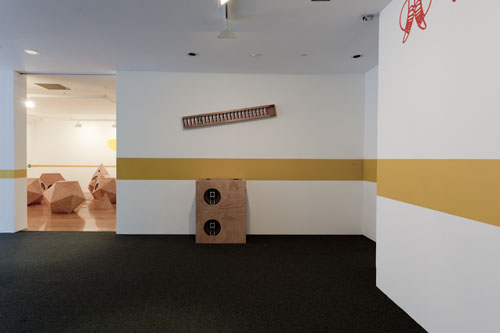
Rasta Blasta with Dan Shaw
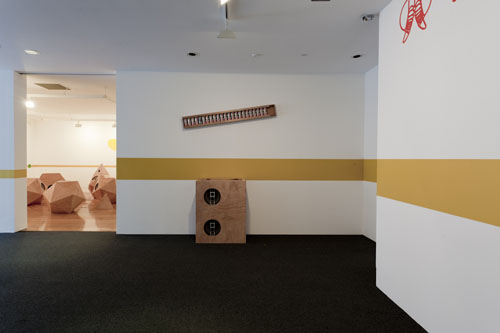
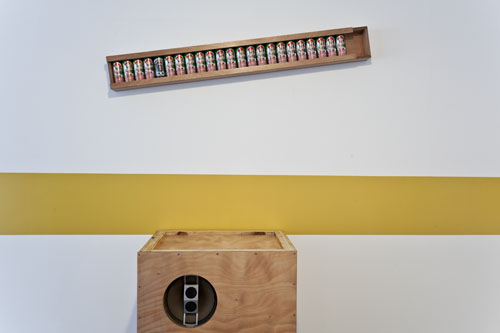
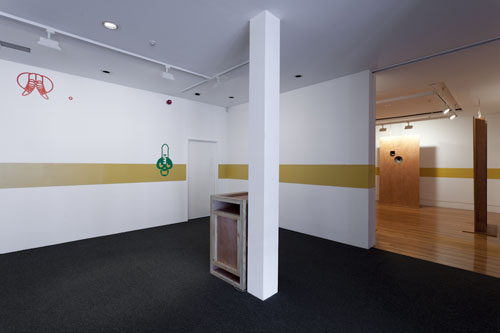
Listen: A Drone Rex&Dan 160kb MP3 6’59”
Download 320kb MP3 16.4mb
Download FLAC 70mb
Download WAV 118mb
Listen: SpeedRacer Rex&Dan 160kb MP3 12’13”
Download 320kb MP3 28.6mb
Download FLAC 108mb
Download WAV 206mb
Listen: Tolls Rex&Dan 160kb MP3 22’39”
Download 320kb MP3 53mb
Download FLAC 172mbDownload WAV 382mb
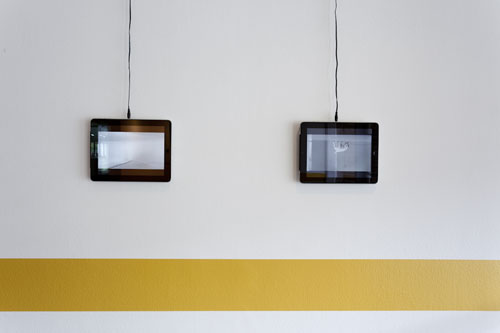
Frank Rocks with Jenny Gillam
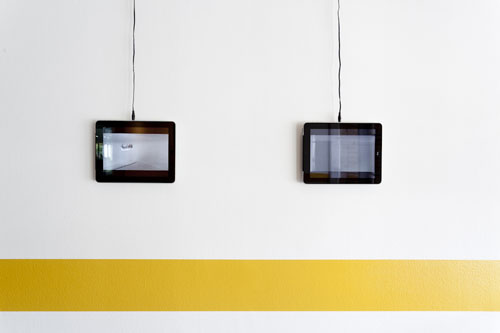
Frank Rocks (RMIT)
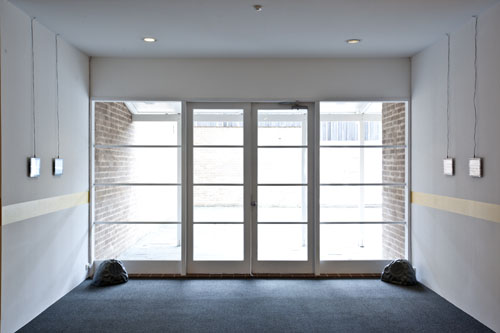
Frank Rocks (Te Tuhi)
Listen: Frank Rocks 160kb MP3 5’52”
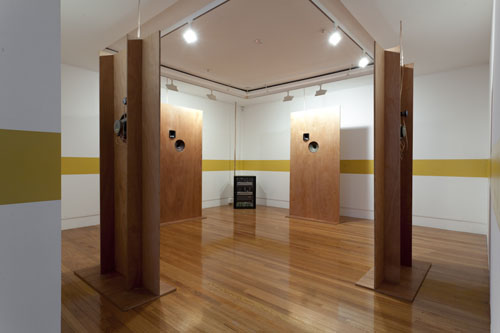
Fieldwork 2 with Andy Thomson
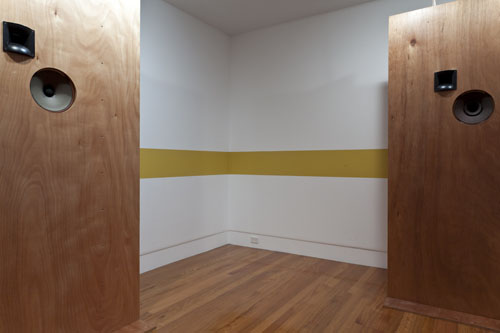
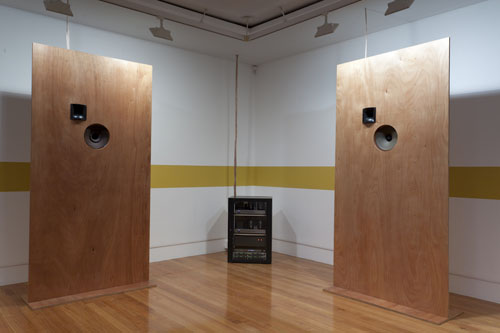
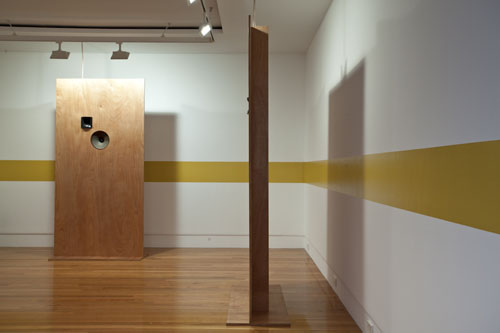
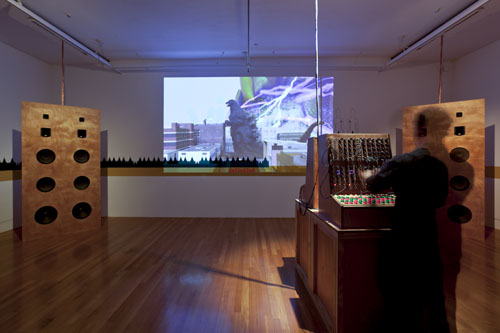
Analog with Mike Heynes
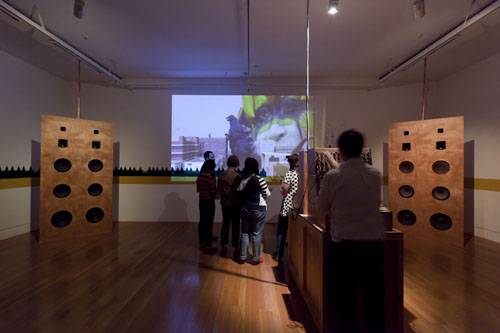
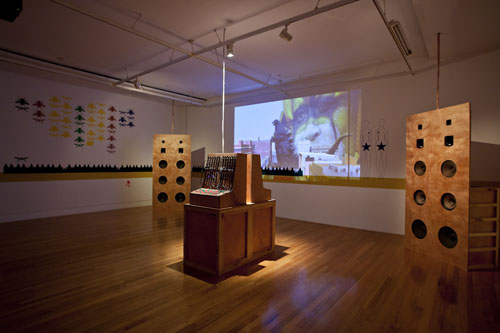
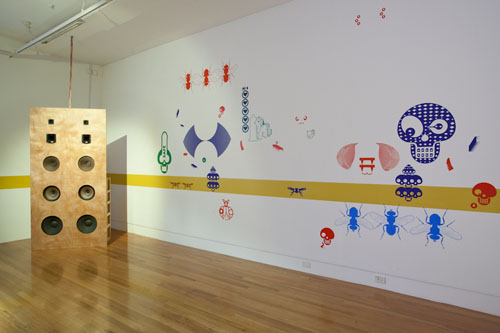

Root Mean Square
Te Tuhi 26 November, 2011 – 29 January, 2012
Reviewed by John Hurrell at EyeContact
Reviewed by T J McNamara at the nzherald.co.nz
Including collaborations with: Dr Kron, Jenny Gillam, Mike Heynes, Simon Morris, Dan Shaw, Andy Thomson, Peter Trevelyan.
This exhibition is comprised of eight collaborations which explore a variety of ways in which audio pervades contemporary life. The world we inhabit might still be adequately described by landscape depiction, however in the second decade of the twenty first century for many of us Media Scape might be both a more apt description and more accurate description. As urbanised detribalised globalised individuals we inhabit a world that exists both physically and virtually. Media is the the interface between these two states of existence. Where a conventional landscape maps a view of a particular site, a Media Scape maps a more complex depiction of our locus. While this media scape is physically comprised of audio and video (or rather the technology that stores and deploys these media elements), more significantly it is a network of mediatised individuals who create a community. It consists of a series of relationships of nodal points, physical locations, characters, friends and acquaintances, like-minded people to work with.
Root Mean Square is an investigation of the politics of site, space and territory and their use in relation to popular culture. In this work I collaboratively develop and deploy a complex multimedia installation where several media scapes are mapped into a fixed local using audio and video to simultaneously collapse and articulate physical space.
Rather than isolating a particular concept or content each collaborator brings their interest in distinctly different but related aspects of popular and audio culture to the project, which reflects and surveys the diasporas nature of the network and therefore the media scape we inhabit. While previous projects have investigated the idea that we now inhabit a diasporas media scape, these have tended to focus on that media scape as both televisual and cinematic. Root Mean Square continues to look at the significance of these forms in popular culture but also builds on my recent practice which investigates the physical biological and cultural primacy of audio.
RootMeanSquare extends my investigation of the idea that collaboration is the primary mode of media production. I have an extensive history of collaborative practice that attempts to make the means of contemporary cultural production transparent. By assembling a large and diverse team of collaborators with various levels of experience and fields of expertise this approach ensures not only a rich and diverse set of content but a sense of freshness in the approach, as some contributors make forays into new territory for their practice – these endeavors are supported by the expertise of other members of the team.
I have been developing an approach where I liken myself to a producer or DJ rather than Artist in a conventional sense in my media installations. This approach also allows for a variety of levels of commitment for each of the participants. I have trialed this mode of production in collaborative media installation and performance projects over the last five years and have previously collaborated with the majority of the artists represented here.
BRUCE PHILLIPS (SENIOR CURATOR, TE TUHI) SAID:
Over the past ten years, Wellington-based artist, Eugene Hansen has explored the ever increasing prominence that audio and visual media has in our daily lives. Often working collaboratively, Hansen creates immersive visual and sonic installations that critically reflect on the constantly evolving media landscape that we inhabit. Due to their collaborative nature, these installations are also significant of the collective networks and individual visions that create our vast global media-scape.
In RootMeanSquare, Hansen makes a significantly new and ambitious development on this body of work by taking over all three of Te Tuhi’s main galleries with a sprawling sound-scape. Collaborating with seven artists from Auckland, Wellington and New York, Hansen creates a number of isolated but interconnected works. Present throughout all the galleries are wall works involving Simon Morris and Dr. Kron. Morris’ work Sound Line systematically demarcates the parameter of the gallery spaces through a yellow ochre line that decreases by 80mm at each doorway. The result is a stepped line that highlights architectural idiosyncrasies and creates a forced perspective between gallery spaces by emphasising an illusion of depth. In a cacophony of bold pop imagery, Dr. Kron’s vinyl graphics both act to invade and complement Morris’ line and other artworks. Ranging from Tibetan temples to swarms of flies in Space Invader like formation, and from cartoon sculls promoting safe sex to a My Little Pony licking a condom, Kron’s work Image Caption draws on imagery from 1980s youth culture to create a sprawling virtual landscape of life, death and chaos. Jenny Gillam’s Future calls the dawn and Frank Rocks both consider the intersection of human and animal cohabitation. Future calls the dawn consists of numerous robot bird alarm clocks programmed to tweet at the crack of dawn in cities around the world known for their contribution to electronic music. Frank Rocks features a series of video works picturing the artist’s Fox Terrier Frank trotting about empty gallery spaces upside-down. However, while Frank’s K9 investigations seem natural they are all simulated in front of a TV studio green screen and superimposed over a still image.
In other works, Hansen initiates collaborations via custom made plywood speaker boxes as both sculptural objects and functional high-fi systems for generating sounds or playing recordings. Peter Trevelyan’s Monophone investigates the ideal geometry for speaker enclosures through a range of complex triangular forms while also considering the technological mechanisation of sound. Rasta Blasta booms repetitive disjointed beats, performed and recorded by both Dan Shaw and Hansen, through large crate-like speaker boxes. Accompanying the tracks are also numerous cans of the energy drink ‘Miss Helen’s Massive Melons’ and ‘Rasta Blasta the Ganga Masta’.
In Fieldwork 2, Andy Thomson and Hansen mix recordings of flies, footsteps, trains, water and other sound-scapes to be experienced spatially via a quadraphonic sound system made of plywood speaker baffles and valve amplifiers. Godzilla and a futuristic samurai faceoff in Analogue, a complex interactive interface, built by Hansen so that push button sounds trigger visuals created by Mike Heynes. The work is powered by two analogue synthesisers, together with a PA and computer system, that allows gallery visitors the opportunity to create endless music or noise.
While the exhibition features many autonomous artworks RootMeanSquare is more than the sum of its parts. Considered as a whole, the exhibition experience resembles everything from a night club to a ‘spacey parlour’, from a hi-fi club to a hardware hackers convention. Rather than adhering to the conventional role of the artist as a single author, Hansen likens his practice to that of a producer, DJ or musician who curates, mixes and jams with likeminded practitioners. A role that finds new relevance due to rapidly burgeoning web-based networks and modes of production. Such innovative practices, including crowd sourcing, file sharing and open source licensing, all draw on the expertise of innumerable individuals to contribute to a whole. However, while drawing on elements of these practices, in contrast Hansen’s overall approach is very much grounded in the low-fi. Sourcing vintage speaker drivers, choosing to build his own synthesizers and amplifiers, are all significant of anti-consumer practices. Practices that prioritise free knowledge and creative adaption of the techno-gadgets that permeate our lives. A position that seeks to have administrator control rather than blindly accepting closed systems dictated by the agendas of multinational companies. Therefore, Hansen’s RootMeanSquare while being many things creates an emergent understanding of the technology and all encompassing media-scape that defines our contemporary situation.
